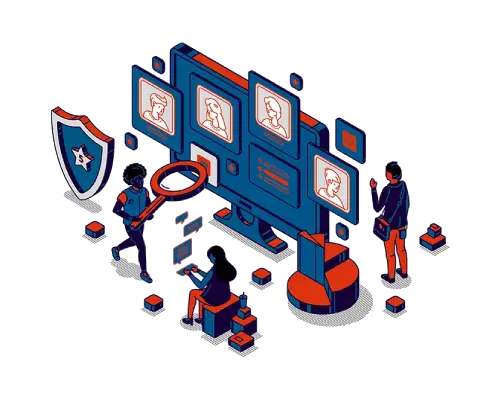Synopsis
KYC processing is a vital part of any financial institution. This process helps prevention of money laundering or terrorist funding. However, manual KYC processing can slow down customer onboarding and threaten AML and KYC operations. Apart from these impediments, manual processing drives up overhead, lacks quality control, and increases fraudulent risk. Consistent AML and KYC compliance becomes a challenge, leading financial institutions to pay hefty fines. Therefore, to curb these challenges, RPA in KYC is the solution. KYC automation tends to the activities requiring a lot of legwork, reducing or eliminating manual touchpoints. A report published by Allied Market Research states that the market size of RPA in the financial institution is estimated to grow at a CAGR of 30.9% for the forecasting period 2021-2030. RPA in banking helps financial leaders save costs, eliminate errors, achieve accuracy, and increase efficiency.
About the Client
Our client is a small finance bank focused on retail banking services such as microfinance, commercial vehicle loans, home loans, loan against property, corporate loans, and financing solutions for individuals and MSE. They aim to offer banking services that create value for their customers, building relationships with their customers on trust.
Key Issue
Our client’s primary challenge was manually processing thousands of documents to create a new customer account. Manual KYC processing caused delays in customer onboarding and created backlogs, resulting in a poor customer experience.
Our Solution
Realizing the need to automate its KYC process with RPA in KYC, the client needed a digital partner who could help them digitalize their processes. The client evaluated various RPA players in the market and chose RPATech as its digital partner. Our RPA experts collaborated with the client’s team and understood their existing operations, and created detailed workflow automation using our in-house methodologies, D3OTM and AugurDTM. Then, we created a Bot in the UiPath platform, deploying the same into the client’s process. The Bot performed the following actions:
- Firstly, the Bot extracts from fixed-format documents using free OCR.
- Secondly, it extracts data from variable formats using Machine Learning (ML) based OCR.
- Thirdly, it validates the extracted data with the data keyed into ERP.
- Fourthly, the Bot processes the verified documents.
- Lastly, if there is an issue verifying a document, the Bot forwards it to the concerned user for manual verification.
Automation Benefits
RPA in KYC resulted in the following benefits for the client:
- 86% reduction in manual efforts.
- 100% reduction in error rate.
- Elimination of backlogs.
- Reduction in human intervention.
- Reduction in turnaround time.




